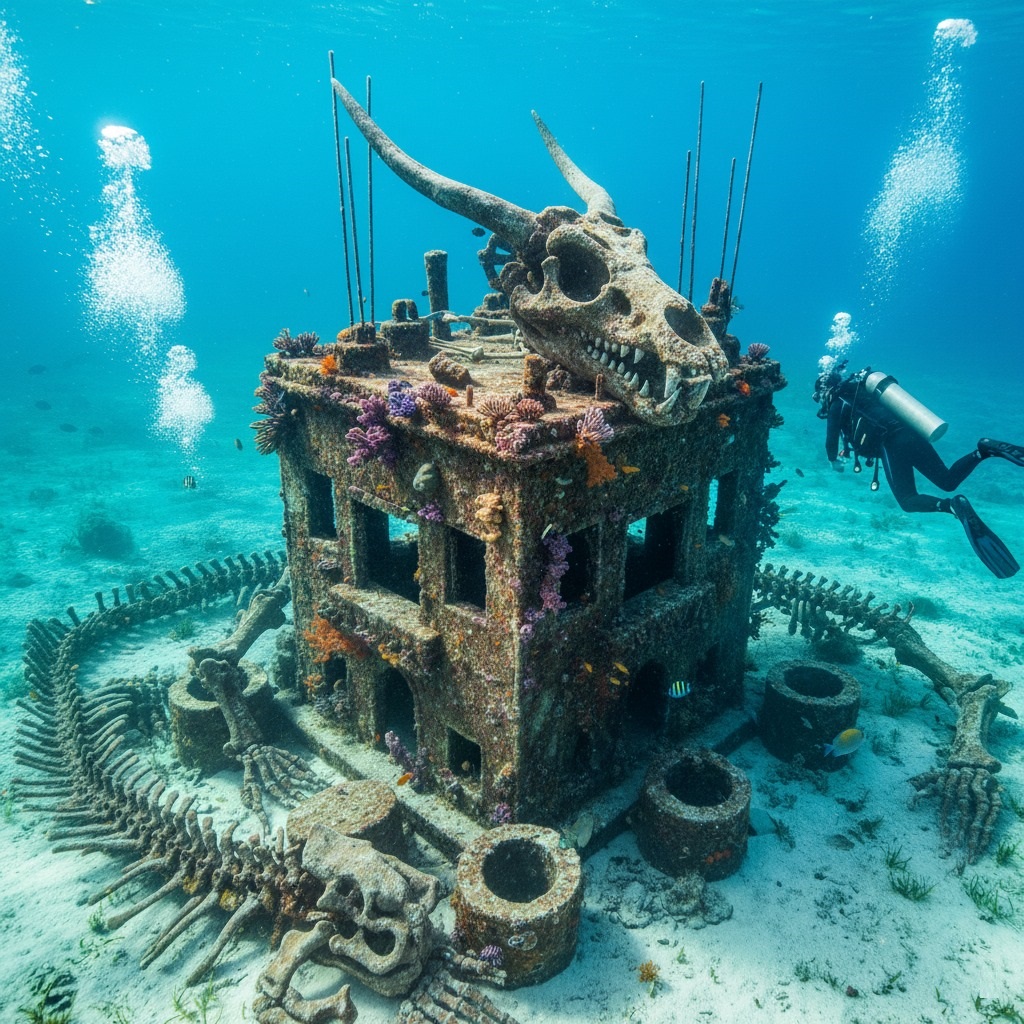Unearthing the Sunken Secrets of the Great Barrier Reef: The Triton’s Monument

The year was 2042. Decades after the initial mapping of the Great Barrier Reef’s outer reaches, a new generation of deep-sea archaeologists, equipped with advanced submersible technology, were beginning to uncover what centuries of global warming and rising sea levels had veiled. Dr. Aris Thorne, a marine archaeologist whose weathered hands had caressed artifacts from the Mediterranean to the Marianas, felt the familiar thrill of anticipation as his team descended into a newly charted trench off the coast of Lizard Island.
Their sonar had pinged on an anomaly, too geometric to be natural, too complex to be modern debris. As the submersible’s powerful lights pierced the sapphire gloom, a structure slowly materialized from the sediment. It was a colossal, cube-like edifice, standing proudly on the sandy floor, its surfaces choked with vibrant corals, anemones, and a kaleidoscope of reef fish. This wasn’t merely an artificial reef – it was a monument.
“My God,” whispered Elena Petrova, the team’s youngest xenolinguist, her voice barely audible over the hum of the sub. “It’s… Atlantean?”
Aris, ever the pragmatist, shook his head, but a glint of wonder was in his eyes. “Not Atlantis, Elena. Something far older, perhaps. And distinctly… Australian.”
They deployed two divers, Dr. Ben Carter and Maya Singh, both seasoned in underwater excavation. As Ben and Maya glided closer, their flashlights danced over intricate carvings now blurred by time and marine life. What had initially seemed like decorative elements on the monument’s summit resolved into chilling detail: scattered bones, and most strikingly, the enormous, horned skull of an unknown beast, its vacant eye sockets staring out into the eternal blue. Beside it, a sinuous, segmented skeleton, undoubtedly from the same mythical creature, snaked around the monument’s base, its ribcage forming eerie archways.
“The Triton’s Monument,” Aris mused aloud, a theory forming. Ancient Aboriginal legends spoke of sea-dwelling protectors and colossal beings that shaped the very coastlines. Could this be a physical manifestation of those myths? A shrine, perhaps, to a forgotten leviathan spirit, built by a culture lost to the encroaching tides millennia ago?
Weeks turned into months of meticulous excavation. The team unearthed smaller, intricately carved stone tablets from the monument’s base, bearing glyphs unlike any known script. Elena tirelessly cross-referenced them with ancient Pacific Rapa Nui symbols and forgotten Proto-Sumerian markings, finding tantalizing, yet inconclusive, parallels. The skeletal remains were sampled, and initial analysis hinted at an ancient, previously undiscovered megafauna adapted to marine life, possibly an ancestor of modern whales, but with reptilian characteristics.
The “Triton’s Monument” became a global sensation. It wasn’t just an archaeological find; it was a bridge to a past humanity had only dreamed of, challenging existing timelines of civilization and our understanding of primeval ecosystems. Each coral-draped pillar, each barnacle-encrusted bone, whispered tales of a time when colossal beasts roamed the oceans and ancient peoples built sacred monuments beneath the waves – a testament to a profound connection with a living, breathing, and sometimes monstrous, sea. The Great Barrier Reef, once revered for its biodiversity, now held an even deeper secret: a legacy carved in stone and bone, awaiting further whispers from the deep.
